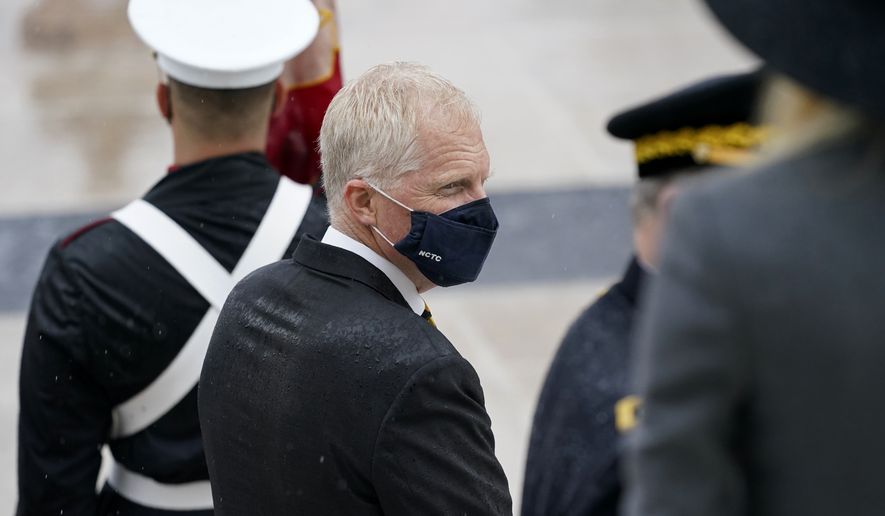Christopher Miller, the new acting secretary of defense, carried two items in his pocket Wednesday during the grand opening ceremony for the National Museum of the United States Army at Fort Belvoir, Virginia.
The first was the Combat Infantryman’s badge his father received as a young draftee soldier during the Korean War.
In what were his first public statements since taking the top Pentagon job following the ouster of Mark T. Esper, Mr. Miller acknowledged not having a long tradition of military service in his family.
He began his military career in the Army Reserve and later served in the Army National Guard in the District of Columbia. Mr. Miller later received a commission and spent much of his career within the Army’s elite Special Forces community.
“My only desire was to serve my nation,” he said during the event, which was online only due to coronavirus-based health concerns.
Mr. Miller said he wouldn’t be standing where he was if not for the values instilled in him during his Army service.
SEE ALSO: National Museum of the Army opens on Veterans Day
“Other than marrying my wife, the best thing I ever did — like tens of millions of Americans before me — was joining our Army,” he said.
The $200 million museum holds exhibits and artifacts tracing the long history of the Army. Most of the items have never before been seen by the public, museum officials said.
“I can’t wait to bring my family here,” Mr. Miller said.
Before stepping away from the podium, the new acting Pentagon chief pulled a second item from his pocket — a small coin that he wielded in a “coin check” with Gen. Mark Milley, the chairman of the Joint Chiefs of Staff.
In Army tradition, someone who is “challenged” in a coin check must produce another unit coin or risk having to buy the challenger a beer.
“I think you owe me a drink, Chairman,” Mr. Miller said.
The museum is a joint effort between the Army and the Army Historical Foundation, which constructed the building using private funds. The Army, which owns and operates the museum, provided the infrastructure, roads and utilities.
Planning has been in the works for more than a decade, and construction began in 2017 with the opening set for late 2019. Construction delays pushed that into this year and then the pandemic hit, but that let the debut coincide with Veterans Day.
The 185,000-square-foot museum chronicles the history of the nation’s oldest military service from its roots as a provincial militia in the early 1600s to combat operations in Afghanistan and Iraq and deployments around the world.
“We can see the relics and hear the stories through the eyes and ears” of the soldiers who served, Gen. Milley said at Wednesday’s ribbon-cutting ceremony.
The museum traces the Army’s history chronologically and through particular themes such as “Preserving the Nation,” the Civil War and the “Global War,” which portrays the Army’s role in the Allied victory of World War II. Scattered throughout the museum are more than 1,500 artifacts, documents and personal stories from soldiers.
• Mike Glenn can be reached at mglenn@washingtontimes.com.




Please read our comment policy before commenting.